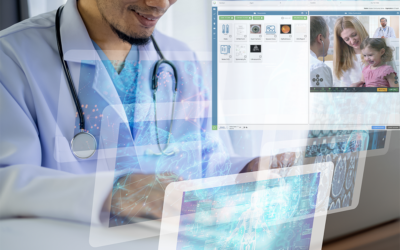Telemedicine is no different. While this sector of the health care industry has seen tremendous growth in the past few years, it’s also experienced its fair share of opposition. However, there are those within the world of medicine and patient care who have been champions of the cause of telemedicine, and their efforts have had a significant impact.
Here are some of the ways telemedicine heavy hitters have been working to increase awareness and adoption of these critical technologies.
Texas hospital leads the way in advancing technology
The University of Texas Southwestern Medical Center holds a unique distinction among university hospitals. It has been declared the “most wired” hospital in the country for five years running. According to a press release issued by UT Southwestern Medical Center, the title is bestowed yearly by Hospitals & Health Networks magazine, which is published by the American Hospital Association.
“Our technology seamlessly integrates into every mission at UT Southwestern,” Bruce Meyer, M.D., executive vice president for health system affairs at UT Southwestern, said. “It is fundamental to continually improve patient care, to remain at the forefront of innovative research, and to ensure the next generation of physicians is well-prepared for the challenges awaiting them. Receiving this honor for the fifth consecutive year reflects that commitment on all fronts.”
A main focus of the technological efforts at the medical center has been improving patient care. One strategy the institution has taken in this regard is implementing technology such as video conferencing that enables practitioners to talk remotely with patients – an important step that may greatly improve transitional care and could even reduce rehospitalization rates. The center has also launched its pilot “video visits” program, which uses telemedicine technology to connect physicians in select clinics with patients remotely – a program that has had significant benefit to many of UT Southwestern’s specialized medicine programs.
“Remote providers are able to examine students with the assistance of the school nurse at patientside.“
South Carolina university connects schools with health care
Not only are some university medical centers focusing on adopting more telemedicine solutions internally as part of their service offerings, but in some cases, they are branching out to set up virtual care clinics in local community schools to help children get immediate access to healthcare.
One such example can be found at the Medical University of South Carolina and its important School-Based TelehealthProgram. This initiative pairs the flexibility and accessibility of telemedicine with the specific need for healthcare in rural parts of the country. The MUSC Health Center’s telemedicine program delivers patient care through the use of an examination camera, telemedicine-enabled stethoscopes and otoscopes, and video conferencing. Using a combination of these telemedicine technologies, the remote provider is able to examine students with the assistance of the school nurse at patientside, and can choose a treatment plan and even prescribe medication.
So kids don’t have to leave school for a doctor’s appointment because they can get the patient care they need right inside the school walls.
This telehealth program helps connect children with access to healthcare services they may not typically have. Factors such as travel time and expense, navigating conflicting child and parent schedules, and a variety of other lifestyle-related factors can be eliminated or mitigated thanks to the flexibility of MUSC’s program.
For more information on school-based telemedicine solutions, visit www.amdtelemedicine.com.





